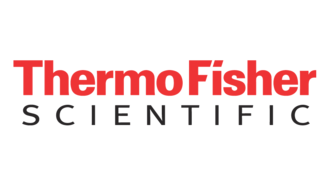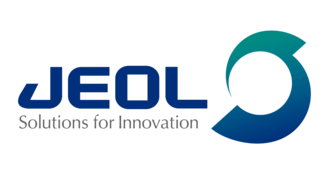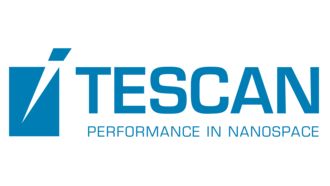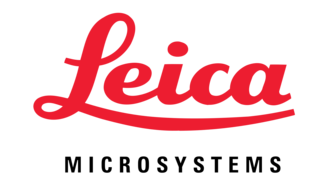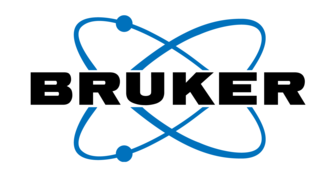The MCM 2017 Sessions
Session: Life sciences
L1. Live Cell Imaging and Intracellular Dynamics
Chairpersons: Carlo Pellicciari (ITA), Maja Herak Bosnar (HRV)
The cell functional features depend on a plethora of dynamic events, such as the interactions between different organelles and their remodelling, as well as the transport and intracellular trafficking of molecular products. Visualizing these events in living cells by non-invasive techniques is the most direct approach for understanding the mechanisms linking the changes in structural cell organization with specific functions and cellular interactions. In this session, different microscopy techniques (among which are time-lapse microscopy, conventional and confocal fluorescence microscopy, scanning probe microscopy, super-resolution microscopy) will be used to dynamically image organelles and molecular constituents in living cell systems in culture or in organisms in vivo. Attention will, also, be given to the application of techniques using light and electron microscopy to describe the occurrence of dynamic organelle changes or the intracellular molecular transport in fixed samples.
L2. High-Resolution Microscopy in Biological Sciences
Chairpersons: Pavel Hozák (CZE), Elisabetta Falcieri (ITA)
Dimensions of many cellular structures are beyond the resolution limit of conventional photon microscopy, yet the analysis of biomolecular complexes consistently represents the base of the functional approach to biological models. A family of recently developed photonic super-resolution techniques is capable of revealing the precise localization of molecules and macromolecular complexes in cells and tissues, along with electron microscopy techniques. This session will cover recent methodological progress in these methods, together with the description of new probes, sample preparation and technical advances. Recent discoveries in cell/tissue organization and dynamics using these techniques will be also presented and discussed in this session.
L3. Structure and Imaging of Biomolecules
Chairpersons: Selma Yilmazer (TUR), György Vámosi (HUN)
The session aims to address the application of advanced microscopical techniques to biomolecules. Studies on their spatial organization, relationships with organellar components, cells and tissues, as well as on their localization and interactions are welcome. The analysis of functional correlations represents an important component of the session.
L4. Nanobiology and Nanomedicine
Chairpersons: Serap Arbak (TUR), Manuela Malatesta (ITA)
Nanobiology and Nanomedicine are new fields of study aroused from the merger of nanotechnology with biological and medical research. Understanding the interactions of nanomaterials with biological structures is essential to assess their potential applications and risks. Session will cover diverse applications of microscopical techniques to explore the effects of nanocomposites on biological systems. Topics include, although are not restricted to, contributions on nanoconstructs designed for therapy and diagnostics, regenerative medicine, tissue engineering, food science, agriculture, environmental remediation. Contributions on innovative techniques or experimental models to investigate nanomaterials in biological environments will also be welcome.
L5. Microscopy in Microbiology, Plant and Environmental Sciences
Chairpersons: Ursula Lütz-Meindl (AUT), Branka Uzelac (SRB)
The session will cover novel results on microorganisms and plants in relation to their environment that have been obtained by advanced imaging techniques. It will address various microscopic approaches (life cell imaging, confocal laser scanning microscopy, electron microscopy, analytical electron microscopy) in research on microbes, algae, fungi and other multicellular organisms, with special emphasis on plants. A particular focus will be on interactions of these organisms with their environment including impact of biotic and abiotic stress, senescence, programmed cell death but also developmental processes. Contributions that provide new insights into cellular and sub-cellular heavy metal or herbicide effects will be very welcome.
L6. Neuroscience and Histopathology
Chairpersons: Milka Perović (SRB), Gerd Leitinger (AUT)
Recent developments in imaging techniques have the power to tremendously advance neurobiology – from elucidating the structure of key proteins to connectomics and from localizing molecules at a high resolution to studying the physiological properties of neurons with fast imaging techniques. This session is open for contributions from all fields of neuroscience where imaging has helped to study the function of neural cells or systems in health and diseases.
L7. Multidisciplinary Approaches in Natural and Biomedical Sciences
Chairpersons: Stefania Meschini (ITA), Ivana Bočina (HRV)
The trends in natural and biomedical sciences, as well as rapid development of the biotechnology have shown the importance of integrated multidisciplinary approaches in natural and biomedical research field spectra. The basic and advanced disciplines of biology, chemistry, physics, engineering, computer science and even mathematics, have now been integrated to emerge new challenges in life sciences. Multidisciplinary approaches have become of great importance in transition from basic natural sciences to biotechnology and biomedicine. This session focuses on applications and merging of a different range of disciplines in natural and biomedical sciences.
Further important themes include the drug delivery of natural compounds with anticancer activity by nanovectors either liposomes or nanoparticles and nanodevices. Everything that can be related with microscopic sciences for visualizing the dynamic processes are also included in this session. A good correlation with specific cellular functions in physiology and pathology is well accepted.
All scientists engaged in research on Natural and Biomedical Sciences as well as in technological innovations are cordially invited to participate and present their results.
Session: Instrumentation
I1. Tomography, 3D Imaging and Image Processing, Phase-Related Techniques (including holography, vortex beams, Bessel beams etc.)
Chairpersons: Peter Schattschneider (AUT), Francisco Ruiz-Zepeda (SVN)
This session covers a broad range of subjects: 3-dimensional information acquired with tomography, confocal or related techniques; advanced data processing for resolution enhancement or chemical mapping; and techniques for shaping or reconstructing the phase of the probe, including holography, quantum tomography, vortex and Bessel beams.
I2. In-situ and Environmental Microscopy (including cryo-microscopy, heating, low-vacuum etc.)
Chairpersons: Sašo Šturm (SVN), Regina Ciancio (ITA)
In situ electron microscopy has seen a great rate of instrumental advancement over the last decade being a subject of increasing impact in materials and life sciences. The symposium aims to bring together scientists from the fields of materials science, chemistry, physics and biology, to discuss current trends and future directions of in situ electron microscopy research. Topics will include nanoscale studies of biological samples, and functional materials under realistic or near realistic conditions, for example, in gaseous environments, at elevated temperatures, and in liquid including the time domain in electron microscopy. The symposium will include a broad range of applications spanning from the fields of energy, engineering, health, materials and devices. Examples are metal alloys, ceramics, soft matter, semiconductors, ion conductors, wide band gap materials, catalysts, quantum devices and nuclear reactor components.
I3. Correlative Microscopy and other Imaging Modalities (including AFM, STM etc.)
Chairpersons: Erik Zupanič (SVN), Levente Tapasztó (HUN)
The session intends to cover recent advances in the field of scanning probe techniques, including Scanning Tunneling Microscopy, Atomic Force Microscopy, Scanning Near-field Optical Microscopy, as well as related local probe techniques. We are also looking for contributions on the applications of the above SPM techniques in various fields, ranging from nano- and materials science to biology and catalysis, including, but not limited to 2D materials, correlated electron systems, molecular self-assembly, nano-catalysis and nano-plasmonics.
I4. Light and Electron Optics, Super-Resolution Microscopy
Chairpersons: dr. sc. Ivana Restovic (HRV), dr. sc. Goran Dražić (SVN)
Even at high magnification, the resolution of light microscopy is limited with the wavelength, small details of biological structures and processes are impossible to see. Electron microscopy offers a higher resolving power and can reveal ultrastructure of the different biological and inorganic specimens; though its resolution is also limited by lens aberrations. The development of spherical and chromatic aberration correction moved the resolution limit way in the sub-angstrom region.
Recent advances in light and electron microscopy and development of super-resolution techniques allow the observation of many biological processes and structures at the cellular and subcellular level. By applying these novel techniques, the researchers can investigate and visualise the exact localization of different biomolecules in cells and tissues and get better understanding about molecular interactions in cells. The focus of this session will be on application of advanced microscopy techniques that provide 3D cell and tissue imaging, super-resolution imaging by single molecule localization or multicolour super-resolution imaging as well as possibility of recording dynamic processes in cells at nanometre scales.
This session will also cover the applications and development of super resolution methods in the field of material and physical sciences. Contributions reporting the use of novel experimental approaches in image and diffraction space which extend the resolution are welcome.
I5. Specimen Preparation Techniques
Chairpersons: Zoltán Kristóf (HUN), Janez Zavašnik (SVN)
Sample preparation - Where it all begins! Sample preparation is the first stage of any microscopy and the choice of this step affect all our subsequent studies, and bias our results. Good sample preparation methods are vital for any research and should be carefully chosen according to the nature, availability, volume, and stability of the sample, as well as the goal of the microscopy study – all these considerations apply regardless of the field of applications. Latest sample preparation techniques frequently rely on automated methods and high-tech instrumentation, however new applications and improvements of classic preparation methods are equally important. In this context, this session will focus on alternatives to conventional sample preparations approaches, improvements, achievements and novel specimen preparation techniques in materials and life science. Particular attention will be given to methods which allow observation of specimens as close as possible to their native state and correlative studies across a wide range of magnification scales. Oral and poster submissions on the topic of “Sample preparation” should include original approaches to address sample preparation issues encountered in field of either materials or life science.
I6. Advances in Instrumentation and Techniques (including aberration correction, low voltage SEM & TEM etc.)
Chairpersons: Michael Stöger-Pollach (AUT), Ferdinand Hofer (AUT)
Including aberration correction, analytical methods at unusual conditions like various beam energies, image contrast formation with respect to beam energy and all exciting new ideas on electron microscopy.
I7. Electron Spectroscopy, Diffraction and Analytical Microscopy
Chairpersons: Nenad Tomašić (HRV), Mehmet Ali Gulgun (TUR)
The session addresses advances (and innovative applications) in electron spectroscopy, electron diffraction and analytical microscopy covering methodical, instrumental, or interpretational level. Topics include contributions based on transmission, backscattering, CBED, and all analytical methods ranging from X-ray dispersion over electron energy loss spectrometry or energy filtering to cathodoluminescence. Also, contributions related to innovative/emerging techniques in electron spectroscopy, diffraction and analytical microscopy are welcomed.
Session: Materials
M1. Thin Films, Coatings, Surfaces and Interfaces
Chairpersons: Ante Bilušić (HRV), Peter Panjan (SVN)
Different kind of state-of-the art imaging and spectroscopic analysis are necessary tools for both fundamental and applied scientific research of thin films, coatings, surfaces and interfaces. Within the session we invite contributions that deal with the study of physical properties of different types of thin materials, by use of the state-of-the-art analytical electron microscopy with complementary analytical techniques, advanced data analysis and simulation tools.
M2. Polymers, Organic and Soft Materials
Chairpersons: Cristiano Albonetti (ITA), Suzana Šegota (HRV)
The session invites contributions concerning current research on both fundamental and applied aspects of soft matters, polymers and composites. Contributions on the self-organization of molecules deposited on crystalline or amorphous substrates are also welcome. Such molecular films, composites or colloid systems are expected to be investigated by state-of-the-art microscopy techniques (i.e. Transmission and Scanning Electron Microscopy, Scanning Probe Microscopy and Light Microscopy) for exploring their chemical/physical properties such as morphology, crystalline structures, etc. In addition, the use of such systems for technological applications, like organic devices, are encouraged. The session will address, but is not limited, to the following topics: molecules on surfaces (molecular resolution, ultra-thin and thin films), supramolecular architectures, electronic, magnetic and optical properties of organic devices, polymer and metal matrix composites, nanostructured composites and gel-nanocomposites, colloidal systems (such as polymer self-assembled systems, micelles, beads and foams).
M3. Materials in Geology, Mineralogy and Archaeology, Ceramics and Composites
Chairpersons: Jonjaua Ranogajec (SRB), Viktória Kovácsné Kis (HUN)
The session covers all aspects of research on composite materials, historic and modern ceramics, cultural heritage materials and its preservation using microscopy techniques for characterization of the original materials and materials used for previous conservation, as well as for the evaluation of materials proposed for future treatments. Contributions from all fields of material sciences using wide range of microscopy techniques, like optical microscopy, Raman microscopy, scanning and transmission electron microscopy, electron crystallography are invited. It includes geology, petrology, applied and environmental mineralogy, mineralogy of extraterrestrial materials, archeometry and other related research fields.
M4. Metals, Alloys and Intermetallics
Chairpersons: Katalin Balázsi (HUN), Franc Zupanič (SVN)
Novel and advanced engineering metallic alloys and intermetallic compounds are attracting the research and development in the scientific and industrial fields for their extraordinary combination of properties, such as ultrahigh strength combined with low weight, improved fatigue and corrosion resistance, biocompatibility and catalytic properties. The development of these advanced materials is impossible without comprehensive knowledge and understanding of the structure-property relationships. Consequently, electron microscopy techniques are an essential tool for the detailed investigation of the structure and chemistry at the atomic level. The session will address, but is not limited to, the following topics: phase transformations, rapidly solidified and quasicrystalline alloys, advanced alloys for the automotive and aircraft industries, multiphase nanostructured steels, materials nanostructured by severe plastic deformations, properties of metallic components made by additive manufacturing, hydrogen storage alloys, alloys for biomedical applications, friction stir welding, high-entropy alloys, shape memory alloys.
M5. Nanostructures and Materials for Nanotechnology and other Applications
Chairpersons: Zdenka Zovko Brodarac (HRV), Mariana Klementova (CZE)
With the advent of nanoscience and nanotechnology, various electron microscopy techniques became indispensable in structural and chemical characterization and local property measurements of materials for nanotechnology, such as nanoparticles, one-dimensional structures (nanowires, nanotubes, nanorods), layered structures and heterostructures. This symposium is focused on the application of electron microscopy techniques in determination of structure and chemical composition of materials for nanotechnology on nano and atomic scale.
M6. Semiconductor Materials and Devices
Chairpersons: Roberto Balboni (ITA), Boštjan Jančar (SVN)
The basic and applied research of semiconductors and other materials for electronic applications remains at the forefront of materials science. Successful engineering of materials with improved functionalities nowadays requires instrumentation that allows nano- or even atomic-scale resolution. This session will collect contributions on progress in the morphological, analytical and structural characterization of semicoinductor materials, and other advanced materials for electronic and energy applications. This includes, but it is not limited to, multi-dimensional and planar devices, wide-gap semiconductors and heterostructures for micro- and nano-electronics applications, as well as the study of issues related to semiconductor technology, dielectrics, piezoelectrics, thermoelectrics and interconnects. The emphasis will be on understanding the composition, microstructure, defect formation and correlation of structure with the processing and performance. In general presentations are expected to address state-of-the-art microscopical characterization of advanced electronic and energy materials.
M7. Biomaterials and Biosensors
Chairpersons: Mihály Pósfai (HUN), Dušan Chorvát (SVK)
Biological molecules and tissues inspire a variety of research efforts to produce materials with special and useful mechanical, optical, electronic, magnetic or chemical properties for biomedical and other applications. This session invites contributions in the fields related to biomimetic and bioinspired materials design and synthesis, and application of biomaterials in sensing, signalling, material transport, or mapping physiological processes. We especially welcome contributions covering characterization of biomaterials and biosensors using various state-of-the-art microscopy techniques, such as scanning probe microscopy, transmission and scanning electron microscopy, correlative microscopy and advanced optical imaging (Raman, fluorescence, lifetime, phase, nonlinear), as well as techniques combining imaging with spectroscopic analysis.
Registration and Abstracts
This site uses cookies.
Some of these cookies are essential, while others help us improve your experience by providing insights into how the site is being used.
For more detailed information on the cookies we use, please check our Privacy Policy.
-
Necessary cookies enable core functionality. The website cannot function properly without these cookies, and can only be disabled by changing your browser preferences.
